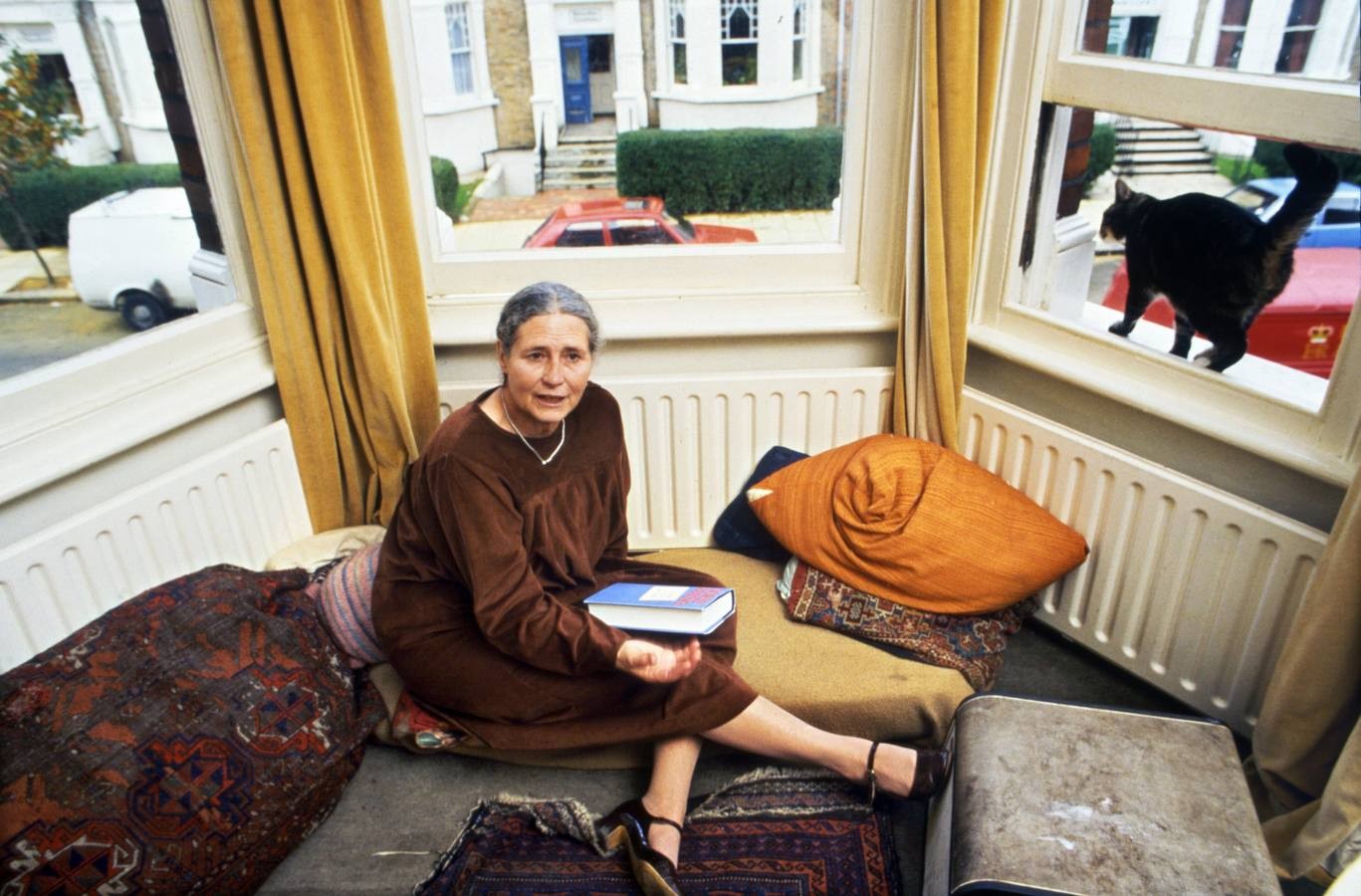

On November 17, 2013, Doris Lessing died in her London home. The internet has some lovely pictures of her outside her home in London, surrounded by bouquets. After receiving the Nobel prize in 2007 as the oldest ever Nobel winner, she joked they had to give it to her for Nobel cannot be given after one has "popped off".
The first Lessing book that I bought was ‘The Golden Notebook’ but the first book I managed to finish was ‘Martha Quest’ from The Children of Violence series. A passage that described what Martha went through in her adolescence was so profound and, in some ways, so familiar to the sensibility of a woman that Martha becomes a universal quest of what it means to live through her times.
‘The Golden Notebook’ explores the notion of friendships and breakdowns between women and men. Consequently, it came to be the sort of book that was hailed as the feminine bible. With women as protagonists, it was a work that chronicled stories of women in a structure of four notebooks. For Lessing herself, it had little to do with feminism. Her art and craft was about humanity and not about gender. She did provide a much-needed interpretation of a woman’s experience of the world but she was in essence a champion of the human experience. Her themes were personal and social, individuals dealing with romanticised communism, with art and relationships. But more than her themes, her craft of writing and her ability to structure a novel was organic and natural.
In ‘Love, Again’ as well as ‘The Golden Notebook’, the structure of the novel becomes delightful, eccentric, with a series of overlapping events that are barely linear retaining a sense of story in the conversations reported by the author between different characters. This playful originality of structure to me has been the most precious in Lessing’s work.
Lessing was born in Kermanshah, Iran, where her father was posted at the time of her birth. Her mother, Maude, was a trained nurse. These two figures are prominent in her work. Her last work of fiction, Alfred and Emily, is a reworking of what her parents would have been had they never married each other. Lessing accomplishes this feat of imagination with her characteristic sense of style. Her writing is never evident; it always points to, even suggests, a certain shade or a specific mood without ever becoming obvious. With this writing style, she manages to retain a sense of awe about lives that seem ordinary at the surface.
After Iran, her parents bought a farm in Southern Rhodesia and there Lessing grew up and went to school.
In her first volume of Biography, ‘Under My Skin’, she chronicles the time of her life in Southern Rhodesia throughout the wars and the days of communism. From there, she arrived in England and the second part of her biography, ‘Walking in the Shade’, deals with her life in England as a struggling and then later on successful writer.
Lessing published her first work, ‘The Grass is Singing’ in 1950 -- a beautiful but sad portrayal of Southern Rhodesia, now Zimbabwe. Her sensibility as a writer is fine-tuned to the human situation. Her writing grasps the micro from the macro. Something that Mantel has described as an ant on the mound of humanity: "her (Lessing’s) sense of scale, has made her able to see how the single ant works and worries in the social heap."
Besides her fiction that deals with "inner space", or the individual consciousness, Lessing’s themes have been varied and she has written science fiction as well as an omnibus edition ‘On Cats’. The Old Age of El Magnifico’ is the name of one such story; El Magnifico is the last cat that shared her hearth. Her Science Fiction series includes Canopus in Argos: Archives. A very interesting influence on her life has been that of Idris Shah, the writer of ‘The Way of the Sufi’ as well as ‘Karakush’, a novel about Afghanistan in the 1980s. She mentions in his obituary she wrote for The Daily Telegraph that he was her friend and teacher for some 30 odd years. In this age of rampant materialism, the sufi code of no attachment must have struck a chord with Lessing.
Doris Lessing is one writer whose legacy of some 60 odd works will grant her a place in the annals of history. Her writing style is rarefied and distilled in its effect. This is a passage from her first book, showcasing the multiple points of view in which truth can be shaded; her main themes are all there.
"There was a long pause. The Sergeant shut his notebook. But he had not yet finished. He was regarding Tony cautiously, wondering how to frame the next question. Or that was how it appeared to Tony, who could see that here was the moment that was the crux of the whole affair. Charlie’s face: wary, a little cunning, a little afraid, proclaimed it."
The words ‘pause’, ‘wonder’, ‘appear’, ‘see’, ‘crux of affair’, all keep suggesting one is getting nearer the truth and then comes a sensory input, with Charlie’s face. Lessing makes the truth shadowed but the visual tangible. This is craft at its finest. In ‘The Golden Notebook’, one of the characters says: "What’s terrible is to pretend that second-rate is first-rate. To pretend that you don’t need love when you do; or you like your work when you know quite well you’re capable of better."
The best of Lessing is summed up in this quote: "Whatever you’re meant to do, do it now. The conditions are always impossible." She did indeed live this dictum.